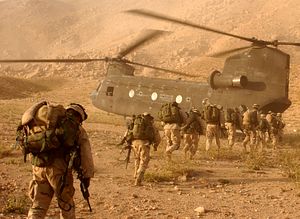Last week, the Obama administration announced that it was making a few changes to the U.S. mission in Afghanistan. Specifically, the new changes will allow the U.S. military more room to maneuver in assisting their Afghan counterparts, while still remaining compliant with the terms of the 2014 Bilateral Security Agreement, which circumscribed a more limited U.S. combat role and marked the end of the U.S. combat mission.
The administration’s decision isn’t coming out of the blue. Analysts of the security situation in Afghanistan have noted steady battlefield advances by the Taliban across the country over the past year. The fall of the Afghan city of Kunduz last fall was seen as a wake-up call for the Afghan government; for the Obama administration, it served as a sober reminder that the plan to continue its steady withdrawal and reduce troop counts further in 2017 would likely be inadvisable.
More recently, following a deadly suicide bombing in Kabul in mid-April 2016, Afghan President Ashraf Ghani resolved to head to all-out war against the Taliban, effectively sidelining the Quadrilateral Coordination Group-led peace talks, which had yielded few results. Finally, in late May, the United States made the call to carry out a drone strike against Mullah Mohammad Akhtar Mansour, the leader of the Taliban, on Pakistani soil, in Balochistan.
At the time, I’d wondered if the Mansour strike would presage a broader shift in U.S. policy, bringing Washington more into line with Kabul’s posture toward the Taliban following the April attack. It appears that the administration’s announcement last week does that to an extent, but it’s still largely unclear precisely how the United States mission will expand. For instance, on U.S. official who spoke to Reuters notes that the U.S. will be able to use additional air power and provide close air support “in those select instances in which their engagement can enable strategic effects on the battlefield.”
But hasn’t the United States already been able to do this? Though the mission post-December 2014 has been restricted primarily to training and advising Afghan forces, U.S. troops have been able to deliver strategically significant strikes, helping Afghan security forces turn the tide on the battlefield. The most significant example of this is perhaps Kunduz. (Indeed, without the ability to provide aerial support, the atrocious strike against a Medecins San Frontiere hospital in the city would not have been possible.)
Even U.S. Defense Secretary Ashton Carter’s clarifying remarks on the administration’s decision kept the waters muddied. Carter, speaking at the Tech One Summit last week, noted that “the president made a decision to enable the commander there to have some additional authority to act proactively.” He continued:
That is to anticipate situations in which the Afghan security forces would benefit from our support. This is using the forces we have here in a better way, basically, as we go through this fighting season.
Carter punctuated his remarks with a clarification of the U.S. mission in Afghanistan, which remains the same: “Obviously, our mission is the same, which is to help the Afghans maintain control of the country, and to avoid having a counterterrorism challenge once again from Afghanistan.”
Some are reading the new change as an expansion of the U.S. rules of engagement (RoE) against the Taliban, but the restrictiveness of previous RoEs has been exaggerated. As my colleague Franz-Stefan Gady reported from Afghanistan in December 2015, after interviewing U.S. officers on the ground, the post-December 2014 RoEs mostly “have changed very little,” allowing U.S. personnel to effectively fight both the Taliban and the Islamic State. The Wall Street Journal (the Pentagon’s chosen outlet to announce the news this time) reported that the new rules will “allow limited air strikes against the Taliban,” but so did the old rules.
The United States’ longest war is set to grow longer yet. Particularly, with Mansour out of the picture, all eyes are set on how his successor Haibatullah Akhundzada will lead the Taliban. Akhundzada continues to be flanked by Sirajuddin Haqqani as his deputy, as Mansour was. With Ghani poised to cast aside the peace process and head to war and Akhundzada likely eager to reciprocate, the United States can expect to remain at war well beyond its original withdrawal timeline.
We’ll hopefully have more clarity on how the U.S. mission in Afghanistan is set to play out after Obama’s departure from office. His administration will have finalized a plan for the next U.S. president by next month. That’ll include a decision on precisely the number of troops that’ll remain in the country through 2017 and beyond, and what they’ll be doing there.

































